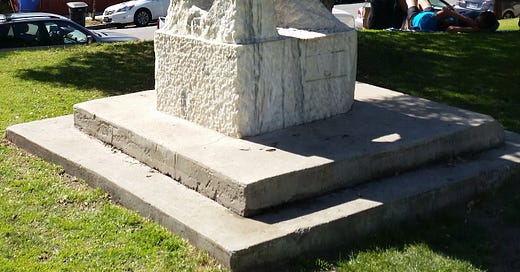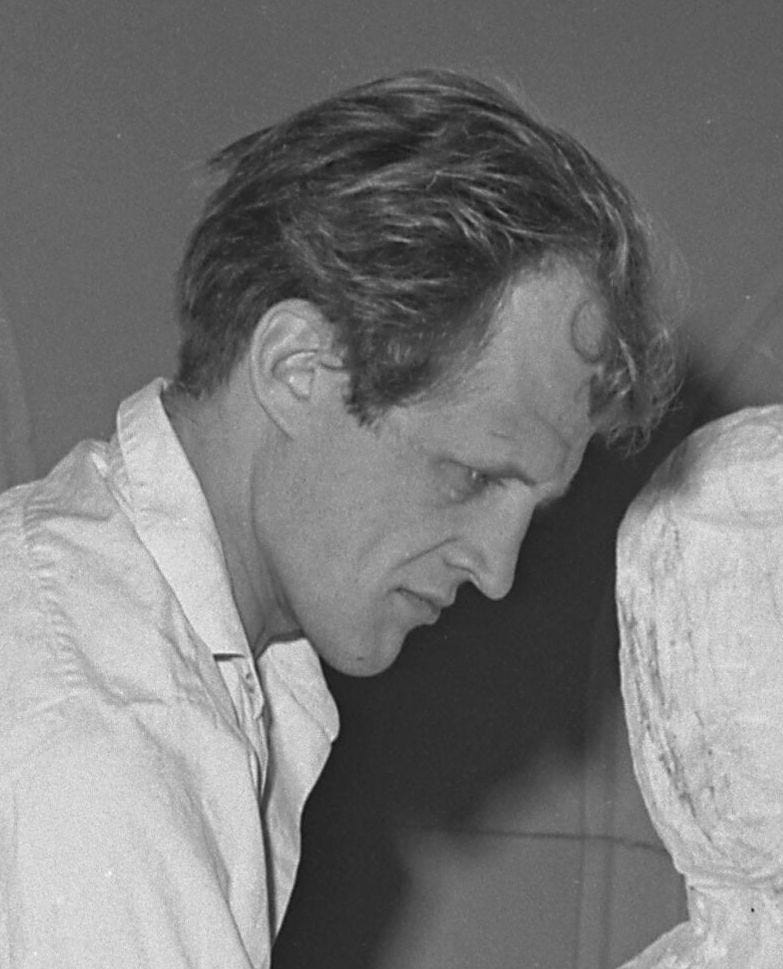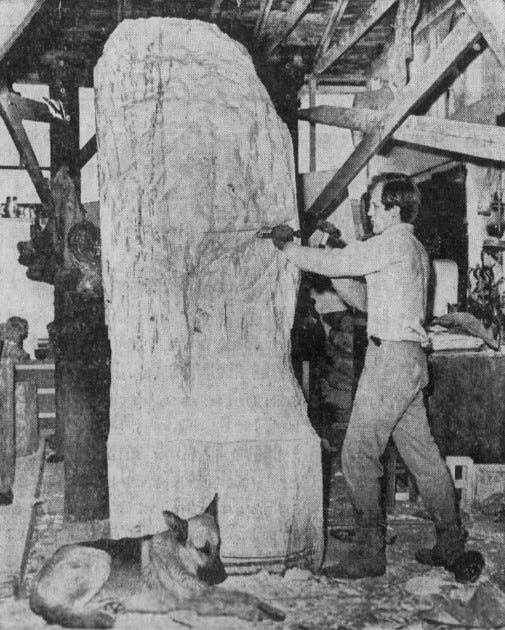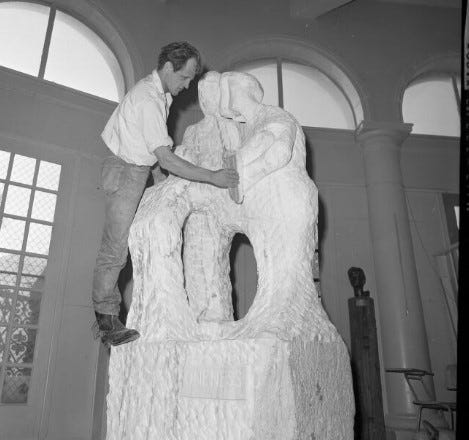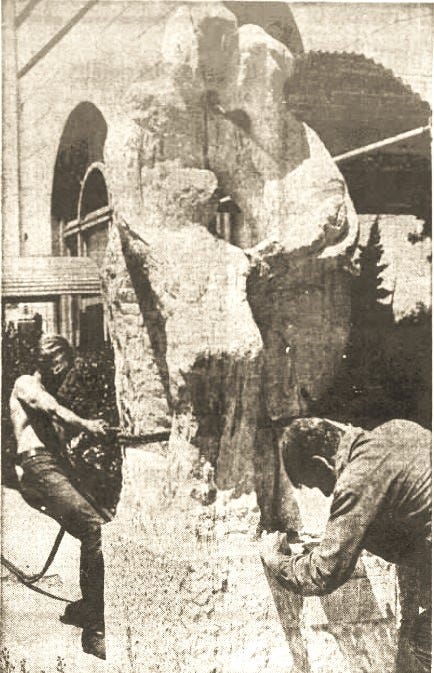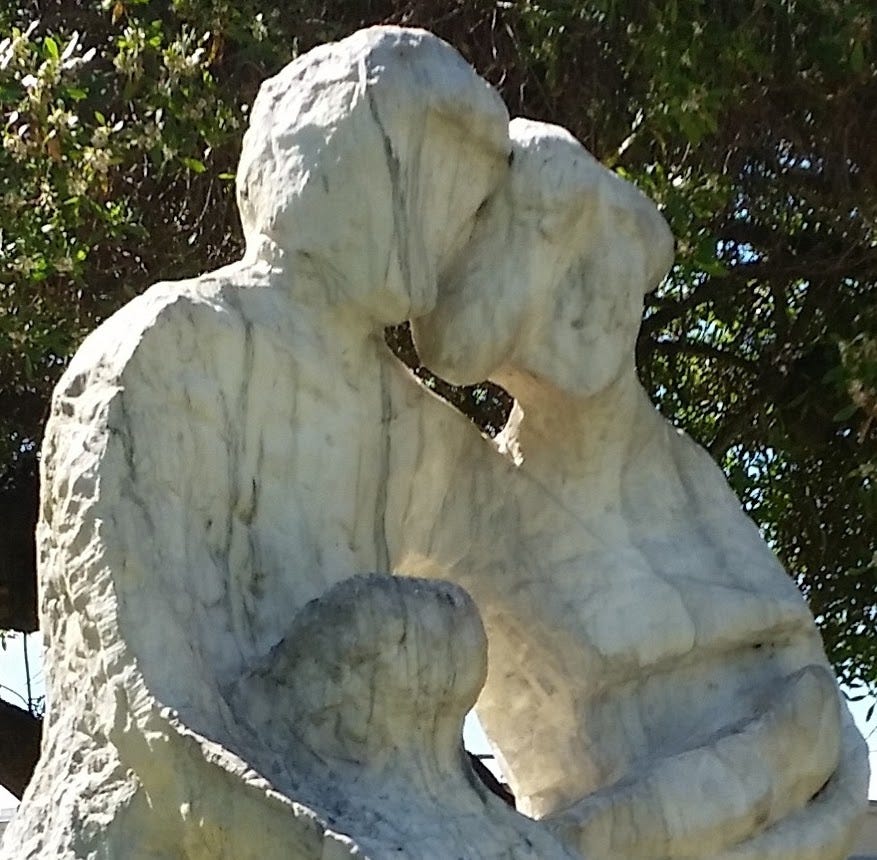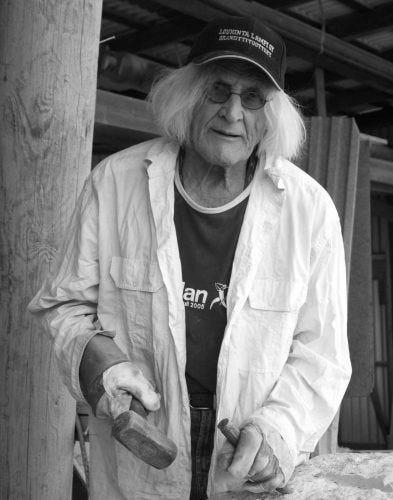In 1966, "Oneness" by 25 year old, recent Finnish immigrant Eino Romppanen (1940–2018)1 finds a home at the west end of Mary Hotchkiss Park. This abstracted but representational sculpture depicts the "oneness" or closeness of the family, as the mother with baby, father, and child embrace.
In 1962, Eino moves to the United States and in 1963, speaking just passable English, enrolls in Santa Monica City College, with the intent of studying psychology. Midway through the first semester, a "vision" tells Eino that his future is as a sculptor. He immediately changes his major and receives permission to join a sculpture class already in progress.
In 1965, Eino purchases a 7 ton marble block for $1,000 at an auction from a bankrupt Los Angeles stone company - paying it off at $38 a month. Eino moves his stone (not easy - especially when you have no money) to 701 W Washington Blvd, Venice. Soon after his moving in, the building is condemned. Eino moves to 711½ Lincoln Blvd, where he setup a combination studio / residence. This violates zoning laws. Someone calls the City. He and his 7 ton stone need to find a new home.
Learning of his plight, Club Casa Del Mar manager Al S. Epstein provides accommodation and studio space at the hotel for Eino. Councilperson Clo Hoover organizes “Fund for Beauty” to raise money to aid the young sculptor. The completed work is proposed for the Santa Monica Mall. But the “special gifts” committee rejects the idea, terming the sculpture “immature.”
After receiving a 900 signature petition from “The Committee for Oneness” organized by Mrs. Thomas Reed, the City Council in 1966 votes 6 – 1 to accept the sculpture as a gift from the artist. The dissenting vote comments “..the council is setting a poor precedent in accepting such a gift without a reasonable judgment of its artist merit.”
Tasked by the Council to find a suitable location, the City Manager turns the project over to the Recreation and Parks Director. Palisades Park already has abundant sculptures. Other parks have too many organized activities for placement of the sculpture. So Mary Hotchkiss Park wins. The Council tempers its generosity by providing no funds for transport nor installation of the sculpture.
Unfamiliar with Santa Monica procedures, Eino pays $51 for the concrete and builds the base himself. He rents a fork-lift and with aid of friends, installs his sculpture. Eino does this without consulting City Hall - “no one told me that I had to confer with the City.”
Outraged, city officials ask the City Council for authorization to remove the sculpture from Mary Hotchkiss Park. The City Engineer informs the Council meeting that the base is neither level nor square, and that during construction it has been defaced with names and initials. And that subsequent to its installation, vandals have defaced the sculpture with various painted markings - “some very interesting.” At the same meeting, the City Manager informs the Council that it will be extremely expensive to keep the sculpture in reasonable condition because of vandalism and the poor quality of the marble. Eino responds that the Italian marble is the world’s best and “…it is the same type of marble used by Michelangelo except that his work was highly polished after completion.”
So enjoy the sculpture at Mary Hotchkiss Park while you can - there are unconfirmed rumors that a major museum has its eyes on it.
Eino Antti Romppanen (1940–2018)
Romppanen's Finnish family are WWII refugees, and he spends his early childhood in Sweden. Eino spends his youth living in Helsinki, until he moves to the United States in 1962. In 1967, Eino marries Christa Brigitte Romppanen (1939 - ) and by 1971, Eino is living off the grid, with Christa and daughter Heidi, on 40 acres in the mountains near Agoura Hills. Eino gets into endurance running, organizes races, and is a coach and manager of several American endurance runners. By 1997, he is in Nevada, where he marries Karla Mary Ely (1956 - ). Eino dies in 2018 in Pahrump, Nevada. Romppanen's sculptures have been acquired for many commercial buildings and public spaces around the world. In his lifetime, he carved hundreds of stone sculptures and created numerous bronze works for public and private collections
